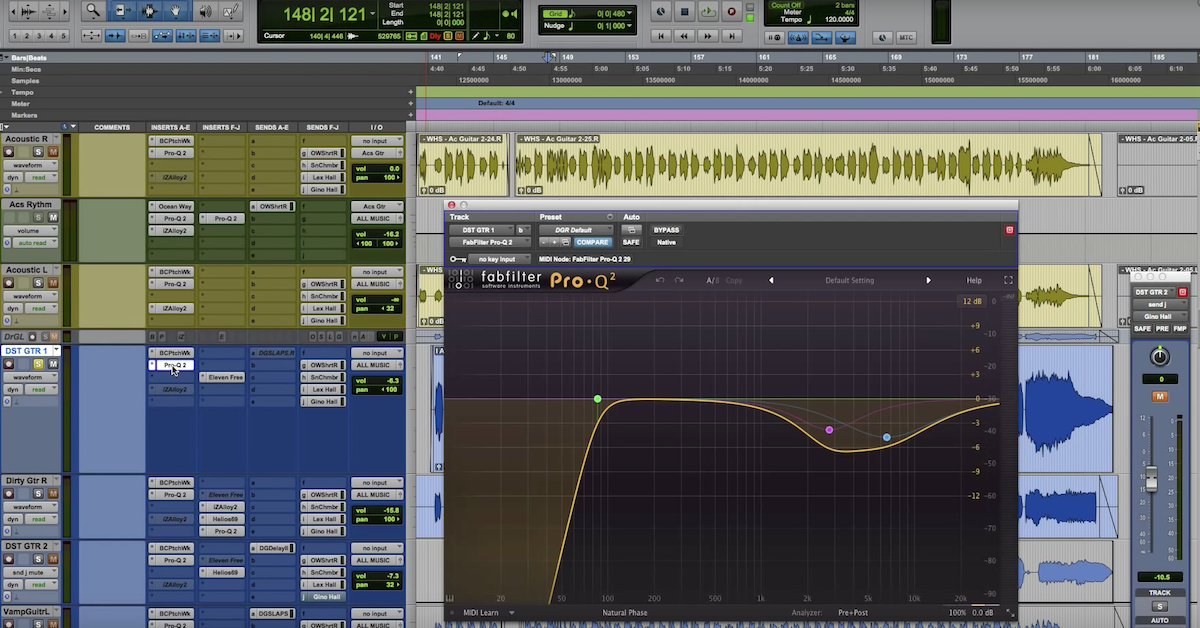8 Tips for Better Guitar Setups in the Studio
Article Content
Often when musicians go into the studio to record, they don’t put a lot of thought into the condition of their instruments. Mostly this is due to the fact that we don’t often hear our instruments in such a magnified manner.
As a producer or engineer, it’s good to be aware of this and prep for a session by having a conversation with the musicians.
Let’s talk about some guitar setup basics. This also applies to bass.
1. String Condition
Some believe you should change strings for every session. This is strictly personal.
Before you tell a musician to change their strings, make sure you know what kind of sound they’re going for.
If they’re going for a Stax records sound, new strings will be a mistake.
2. String Height
Did you know that the height of your guitar strings affects the tone of your guitar?
String height noticeably affects tone. Before you drop your action to the lowest possible position, consider that the higher the action, the more open the instrument sounds. There tends to be more sustain and nicer resonance.
This is really obvious on acoustic. People often think my action is too high. I keep it high not only because of slide guitar playing, but because the sustain of the instrument is better.
Sure, it’s going to be harder to play, but unless you’re a shredder, you’re going to appreciate the gains in tone.
3. Tightness
Sometimes things come loose inside acoustic guitars. Maybe a wire for the pickup came loose. That wire can vibrate and be audible through the mics capturing the instrument.
Strap buttons can also come loose as well as jacks. One last culprit of rattle that people rarely check is the tuners. Sometimes, the washer comes loose on the tuner. This washer when tightened is holding the tuner on the guitar. It’s good to check it not only for noise but stability.
These are the types of things that can go unnoticed in a live setting. The second you hit record, it’s a magnifying glass on your instrument.
4. Pickup Height
It’s worth talking to your guitar tech about pickup height. It changes the tone a lot. When your pickups are closer to the strings, it increases the output and high frequencies. If they’re too close they can kill some of the sustain of the guitar due to the pull of the magnets.
As you move the pickups further away, the high frequencies dull and the output lessens. As you can imagine, too much in either direction has issues. The sweet spot may not be the same for everyone though.
There are standards, but it’s worth a talk with your tech to see if the setup is matching your playing.
5. Knob Creek
Did you know the guitar volume knob affects overall tone?
Yup, rolling it back a little will show very different colors of the guitar. Ten isn’t always the right number. The tone knob isn’t the only tone knob on the guitar.
To be able to use the volume knob, it has to be in working condition. You’d be surprised how often I’ve run across people with pot issues. No, I’m not talking Cheech and Chong here. I’m talking about volume and tone knobs either not working or are really scratchy.
6. Intonation
It’s never a bad idea to check the intonation on your guitars before a session.
Sometimes a guitar that’s a little out isn’t a problem, but for some sessions, that doesn’t fly. If it’s not your own recording, better play it safe. You can have a tech set your intonation, but it’s best if you learn to do it yourself. You may have to make an adjustment on the fly someday.
In fact, it’s more than likely that you’ll have to make a tweak. Setting intonation is not a hard skill to learn.
7. Truss Rod
This adjustment requires experience. It’s not the sort of thing that should be attempted without a little research.
Small adjustments make a big change and big adjustments can cause damage.
I do all of my own truss rod adjustments. I had to learn because we own over 20 guitars. We would go broke paying a tech. With that said, there are times I still take a guitar to a tech for a checkup.
8. Hydration
Acoustic instruments sound different when they’re too dry. This is especially important to consider in the winter when caring for studio guitars. You should store all acoustic instruments in a room that is humidified between 40% and 50%.
To my ears, guitars start to sound thin and brittle when dry. I try to keep our instruments at the same humidity all year round.
—
It may seem impossible to be completely aware of all these variables, but once you know where you can run into trouble, it’s just simple troubleshooting.





